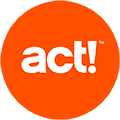
A good sales funnel gives your sales team a steady stream of prospects and provides them with everything they need to turn these people into customers.
A sales funnel typically has three stages:
- Awareness and discovery: This is when a prospect becomes aware of their problem and begins to research it. During this stage, they take action on your website, such as downloading content or signing up for a free trial.
- Researching solutions: The sales team contacts the prospect to find out more about their needs and if they are a good fit. Asking qualification questions helps the sales reps identify the prospect’s problem and educate them on how their product or service can solve it. They can, for example, point them to in-depth content and information to address their challenges and further qualify the lead.
- Purchase decision: This is when the prospect is ready to buy. Sales teams can help by delivering proposals, answering final questions, and sharing content to overcome any final barriers to sale.
This article will show you three real-life sales funnel examples and the types of content and resources each company uses to guide them through the funnel. You can use these examples as templates when building your own strategy.
Example One: FreshBooks
FreshBooks is a cloud accounting software for small businesses and startups. It has a well-developed sales funnel with plenty of techniques you can borrow.
Awareness and Discovery
FreshBooks invests a lot in blog posts and content for the top of the funnel. Much of this focuses on helping small business owners with queries related to their finances.
This article on working-capital ratio is a great example. It is a complex topic, but the post contains much useful information.

The article ranks on the first page of Google for the term “What is working capital ratio.” This means that when people search for information about this topic, they may click on the link.
The post has three calls-to-action that encourage the user to enter the next step in the funnel. These are:
1. A downloadable eBook about how businesses can use working capital to unlock their growth potential.

2. A box where the user can sign up to the FreshBooks blog newsletter.
![]()
3. A button where users can access a free trial of the software.
![]()
These three offers are great ways for a sales team to collect information about a lead such as contact details, job title, company name, and the number of employees. Reps can use this data in the next stage.
Researching Solutions
Now FreshBooks has the visitor’s email address, the sales team can contact the prospect to qualify them further. They do this by asking questions to find out if the product or service is a good fit.
When they know the prospect’s needs, reps can send them content that shows how the software can specifically help with their problem. This could include case studies like the one below.

Purchase Decision
During the funnel’s final stage, the sales team works to overcome any objections the prospect may still have. Reps will be making presentations and phone calls to ensure they smooth out any issues.
FreshBooks also has a ton of great content to help users make a purchasing decision. For example, its pricing page has all the information anyone would need to know about the product and its different tiers. It also has an in-depth FAQ section that answers some common questions.

Example Two: Moz
Moz is a suite of marketing tools that help businesses with their search engine optimization (SEO) strategy. The company has an in-depth sales funnel, which can teach us a lot.
Awareness and Discovery
Moz’s sales funnel starts with blog posts that appear high on Google search rankings. The business has been writing educational content for years, and it appears in the results for a large variety of related terms.

Once the visitor is on the Moz website, they can access a variety of lead magnets. These include:
- Free tools that visitors can sign up to use at no cost. Most of the tools are limited versions of the main Moz software.
- Webinars that teach SEO.
- White papers that explore topics related to SEO.
- A free trial of the software.
When the user signs up to the free tools or downloads content, Moz ramps up its conversion efforts by using marketing automation to send emails.

The main aim is to get users to sign up for a free 30-day trial of the full-featured software.
Researching Solutions
When users sign up for the free trial, they provide industry and company information, which Moz can use to tailor the experience. This information could also help the sales team send the lead useful content to convince them to pay for the service.
The free trial also comes with an onboarding with a Moz sales rep. At this point, the rep needs to define the prospect’s needs, so they can show them how to use it in the most beneficial way.
Following the onboarding, reps can send more information to teach the prospect about the product. For example, in-depth guides that show how it solves the specific problems mentioned by the prospect during the meeting.
Purchase Decision
At this stage of the funnel, sales teams attempt to overcome any final concerns the prospect has about the software. They may provide further demonstrations to smooth over any issues. Product feature explainer videos can also help.
The sales team may also negotiate to ensure the prospect gets a deal they are happy with.
Example Three: TravelPerk
TravelPerk is a business travel planning solution. It is a smaller company than the two above, but its strategy shows how a business with fewer resources can build an effective funnel.
Awareness and Discovery
TravelPerk has plenty of blog content that shows up for related searches. It has a blog post that ranks number one for the search term “how to plan a business trip,” which undoubtedly gets the company a consistent stream of new leads.
The company has plenty of lead generation resources, and each blog post has related downloadable content that offers further information on the topic.

On the landing page for the resource, the lead must provide information about their company to download the content, which the sales team can use later in the funnel.
Researching Solutions
TravelPerk can now begin to send the lead information about its product. The aim is to either get the lead to sign up for free, or to request a demo of the software.
When the potential customer signs up for a demo via a form on the website, the sales team is informed, and they can contact the lead to arrange a date and time for the meeting.
During the demo, the sales rep will discover more about the prospect’s needs and challenges. They can then send information that relates to their specific problem.
TravelPerk has an array of webinars and eBooks sales reps can show to prospects to help them with their purchasing decision. This content highlights why a travel booking solution is useful and tells prospects how to select the best one for their company.
Also useful is TravelPerk’s extensive collection of case studies. Sales reps can point prospects towards the ones that show how the software has helped similar businesses.

Purchase Decision
The salesperson’s goal now is to get the prospect to sign up for the service. Reps will be fully involved in highlighting the value of the solution and answering any final questions the prospect has.
The sales team may make specific presentations to clients to explain certain product features or benefits they think will be useful.
Wrapping Up
The exact steps a prospect takes and the interaction they have with the sales team will vary depending on their needs. However, by having the steps clearly mapped out like above, the sales teams at each company will have a good idea about what they need to do at each stage to ease prospects closer to a sale.



